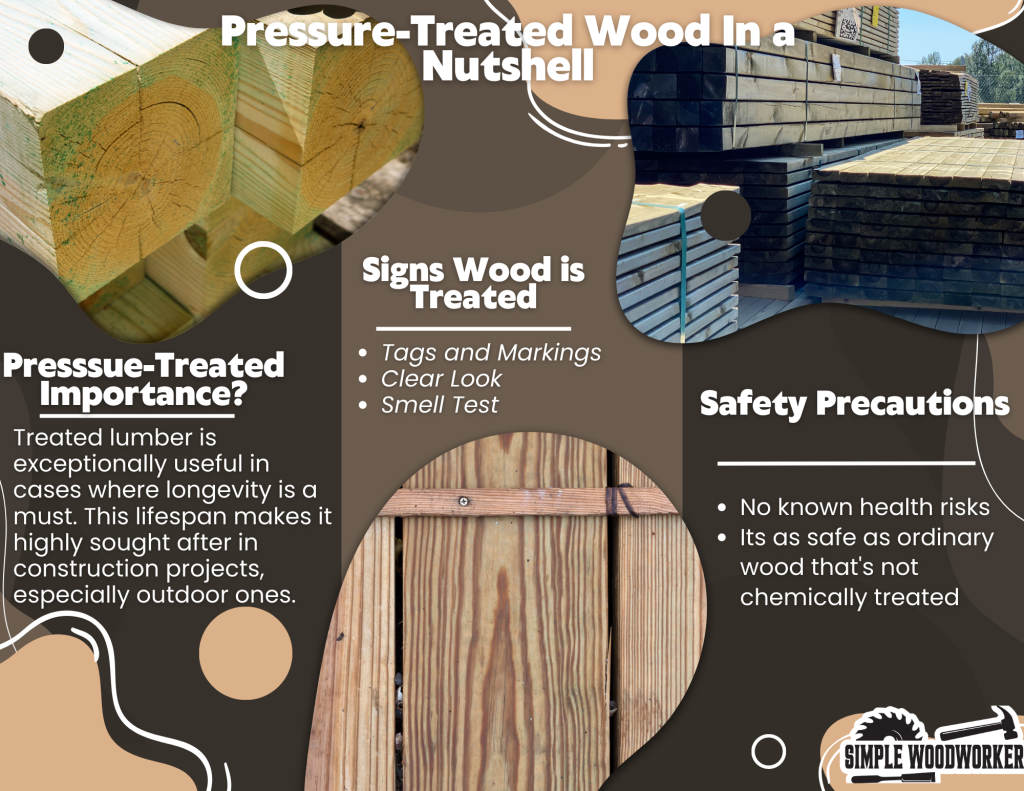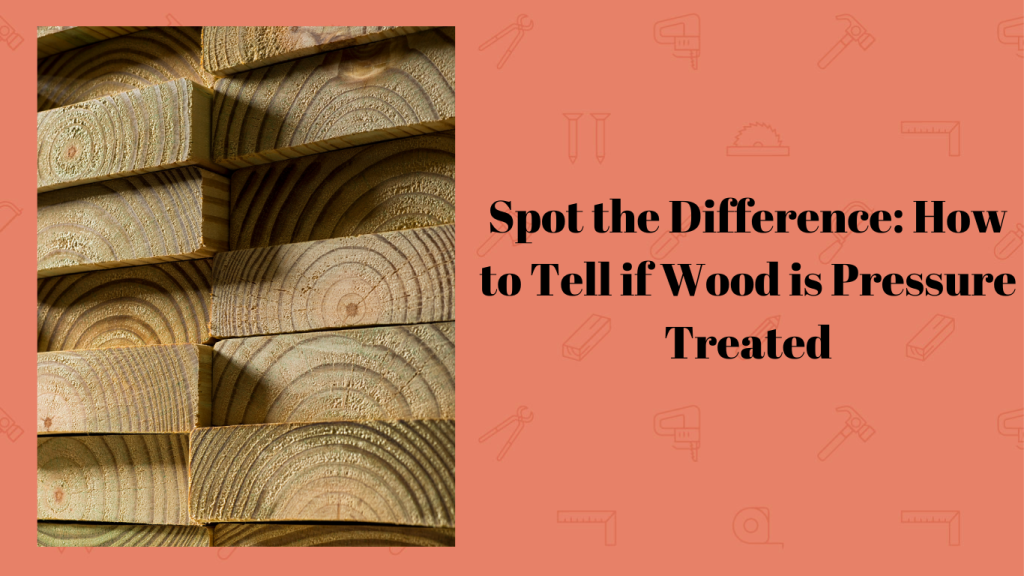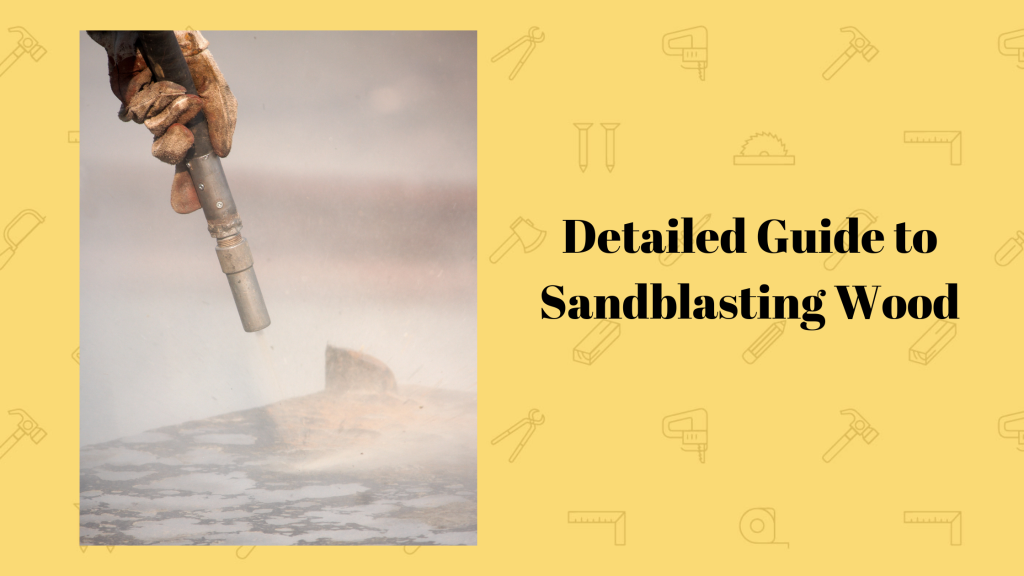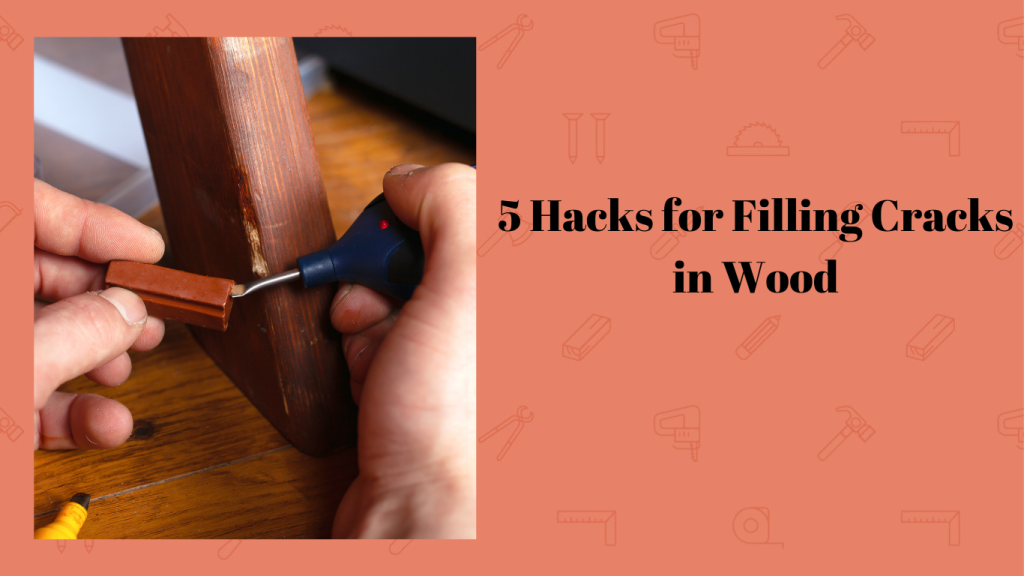Knowing how to tell if wood is pressure treated is a frustrating (yet, often inevitable) challenge you’ll likely reach on your woodworking journey. Like many of you, I would prefer if wood came pre-made with a “pressure-treated” label, but things are a bit trickier!
If you need help quickly figuring out the difference between ordinary wood, pressure-treated varieties, and other types of lumber like manufactured wood, rest assured that you are not alone!
Further on in this post, I will guide you through knowing what pressure-treated wood is and how to identify it, why it’s important to tell whether you’re working with treated lumber, and safety tips to keep an eye on.
Here we go!
What is Pressure Treated Wood?
Okay, let’s start with the basics before we dive into how to tell if wood is pressure treated. What even is pressure-treated lumber, and what’s all the fuss about?
Pressure-treated wood is just lumber that has undergone a special process to add chemical preservatives. These preservatives make the wood stronger, more durable, and longer lasting, imparting other benefits like flame retardant properties.
Think of it this way: Every once in a while, you might need a trip to the spa to feel refreshed and brand new.
Wood is the same way! Pressure treatment is its version of a spa day.
The types of chemicals and preservatives used to treat lumber can vary widely. Some common preservatives used in the process include chromium, copper, and arsenic (not as scary as it sounds, I promise!)

Why is Knowing Whether Wood is Pressure-Treated Important?
Now that we know the basics of pressure-treated wood, what difference does knowing how to tell if wood is pressure treated make? When should you use treated lumber over ordinary timber, and what happens if you mix it up?
While you can technically use treated wood for almost any woodworking project, there are a few situations where pressure-treated wood shines the brightest.
Treated lumber is exceptionally useful in cases where longevity is a must. This lifespan makes it highly sought after in construction projects, especially outdoor ones.
The preservatives used in the treatment process help keep treated lumber resistant to insects and weather decay.
Or, to put it more simply: Knowing whether your wood is pressure treated is a good way to keep from accidentally offering your wood table as a midnight snack for termites!
Signs Your Wood is Pressure-Treated
Alright, telling treated lumber apart from its more ordinary brethren is important. Got it…but that still doesn’t answer the question of how to know if the wood is pressure treated.
As a caveat, there are several types of treated lumber, and these different varieties can look and feel different.
That said, there are definite signs you can look for to judge whether a piece of lumber is likely to have gone through a chemical treatment process.
It’s sort of like superheroes; just like the Avengers, each has unique abilities to make them stand out; pressure-treated wood has its own “traits” that set it apart from the lumber crowd.
Tags and Markings
The quickest and most surefire method for how to tell if wood is treated is to look for tags or other markings that indicate it went through chemical treatment.
Unfortunately, not all pressure-treated wood is so cooperative (if only!). But, many producers ship their treated lumber with clear indicators. Look for tell-tale signs like stamps, tags on either end or abbreviated engravings.
What Treated Lumber Looks Like
So, what if your lumber doesn’t have any markings? What other signs can you look for to see if exposure to chemical treatment took place?
Pressure-treated wood often has a clear and familiar look. You can expect unusual coloring, like a dark brown or light green tint.
Now, can pressure-treated wood be painted to look like a different color? Sure, but unless you’re buying it secondhand, you’ll probably see its chemically-processed color.
Want to know what a piece of treated lumber can look like? You can always buy some boards you know have been pressure treated, like these maple lumber boards.
Not all treated lumber looks like this, though.
You can find many types of treated wood on the market, from ground-contact pressure-treated wood to green pressure-treated wood. These types can all look different, so it’s best only to use the sight test along with the more reliable smell test.
Try the Smell Test
When in doubt, give the piece of lumber a brief smell!
Treated wood has a highly distinct scent that can quickly differentiate it from other lumber varieties. A strong chemical odor, almost like gasoline or oil, can easily help you know what type of wood you’re working with.
And, if you’re interested in applying chemical preservatives to your wood, you can always check out Tenino Copper Naphthenate.
Not only will it help you get experience in preserving lumber, but it will also help you identify the chemical smell treated wood has!

Safety Precautions
Given that any woodworking project always has dangers and possible risks, I’d be remiss not to give you a few safety pointers when working with pressure-treated wood.
After all, a woodworking adventure should not end with a trip to the hospital!
Here are a few precautions to remember when dealing with pressure-treated wood.
Are There Health Risks?
So, let’s get one thing straight: If you’re building or repairing a project, no known health risks are associated with using pressure-treated wood.
Treated lumber is just as safe as ordinary wood that hasn’t been chemically treated. You can use it for indoor and outdoor projects; long-term exposure won’t lead to illness or side effects.
Can You Burn Pressure Treated Wood?
On the other hand, the question becomes much more serious when you talk about burning treated lumber.
Can you burn pressure-treated wood? No!
Burning treated wood has a host of health and safety concerns, including exposure to dangerous heavy metals like arsenic and copper.
Conclusion
Alright, so at this point, we’ve practically become wood detectives! We know what pressure-treated wood is, why it’s crucial to tell it apart from other types of wood, and the special signs and identifiers you can look for to spot treated lumber.
Hopefully, this covers everything you need to know for how to tell if wood is pressure treated!
*This post may contain affiliate links. Please see my disclosure to learn more.



